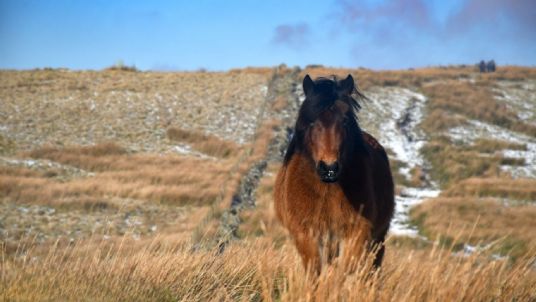Lucerne, a Prince Among Horse Feeds!
26 August 2011
There has been a lot of chat about lucerne/alfalfa lately and it seems many people have been confused by conflicting reports and various dire warnings! As it is potentially such a useful for feed for so many horses, I hope the following will shed some light on the benefits of this wonder-feed!
Where ever in the world that lucerne (or alfalfa, its American name) grows, it is highly rated as a feed not just for horses but for other livestock, too. A couple of generations ago, lucerne was widely grown in the UK as horse feed, either fresh or as hay, but as farm horses declined, so did the growing of lucerne. It does not stay fresh for long if it has to be transported, and to make lucerne hay requires considerable skill and luck with the weather. However, a few farms dedicated to growing forages for artificial drying have kept lucerne production here going and it is quite widely grown on the Continent. Small amounts are produced for silage, mainly on organic farms, as lucerne requires very little inputs and easily fits into an organic regime, and a little is made into hay or haylage.
In America, it has been developed for fattening beef cattle, varieties having higher protein and higher sugar than in Europe or the UK. Due to their favourable climate, southerly latitude and low humidity, sugar levels tend to be higher anyway and they “cut and come again” up to 9 times a year with irrigation, to producing high nutrient forage that to us may seem a little too rich for horses!
Lucerne is naturally high in calcium and magnesium, with excellent levels of very many useful minerals and trace elements, due to its being a very deep rooting plant, accessing minerals out of the reach of shallow-rooting grasses. It is possible that the horse’s requirement for calcium has been under-estimated, but in our temperate climate, any excess calcium is easily excreted. In more southerly climes, this can be a worry, as the sub tropical grasses are high in oxalates, causing calcium to form stones.
Lucerne is a good source of protein – protein levels are higher in younger plants and reduce as the plant ages. This protein has exactly the right balance of amino acids for horses. However, as with all forages, only about 50 – 60% of the protein is digested in the foregut, so it is misleading to compare forage protein with that from cereals and pulses (grains such as wheat, oats and barley, or peas and beans) as this protein is highly digestible, up to 90%.
The undigested protein is then available to the microbes of the hindgut, acting as pre-biotic, helping to keep these vital organisms in good health. Gut microbes ferment fibre to free fatty acids for the horse to use for work or building condition, they make vitamins of the B complex and Vitamin K, help maintain the horse’s body temperature and support the immune system.
Lucerne is an under-valued feed for performance horses. These horses are under stress of training and competition and are often managed such that they have long periods fasting. Their concentrated food is high in starch and sugar and increases stomach acid. All these factors combined increase the risk of gastric ulcers. Lucerne, being forage, can be fed directly before work and physically retains gastric acids in the correct part of the stomach. The calcium and proteins both act to help neutralise or buffer acid in the stomach, reducing the risk of ulcers. Undigested protein also buffers acids in the hindgut, reducing the risk of laminitis, for instance.
So, just how much of this super-food can we feed to our horses? In America, there are plenty of horses who eat nothing else! Some people say 15% of the diet, others 35% but so long as the lucerne is harvested at a reasonably mature stage (10 – 30% bloom) it has plenty of fibre, (around 30 – 35 %), low sugar (around 4 – 6 %) and low enough protein (14 – 17% is typical of UK lucerne) you can feed anything up to 40% of the diet, 1% of its weight – or 5kg for a 500 kg horse. Allergic horses on exclusion diets may successfully be fed a total lucerne diet.
Lucerne is a safe, non-heating feed (low soluble carbohydrates give less “hot” behaviour and supports aerobic exercise, with less muscle heating and sweating) that has suited horses for literally thousands of years. In its pure form, it is unbeatable. However, molassed can be “heating”, adding tasty herbs may cause horses to eat faster than is natural and adding soya oil over-supplies the pro-inflammatory omega 6. Dried chopped lucerne may have fine particles from crushed leaves, but can easily be dampened with water.
Lucerne can be used for all equines, in all levels of work. It comes in many different forms, such as chop, pellets, cobs, blocks and so on and different harvesting methods produce feeds of different nutritional values. It is definitely worth your consideration!



